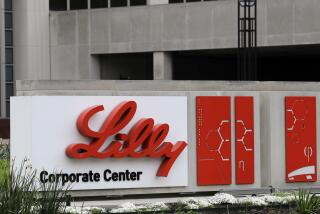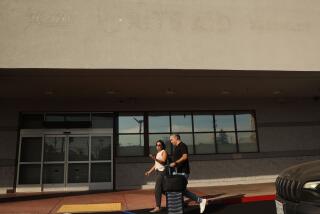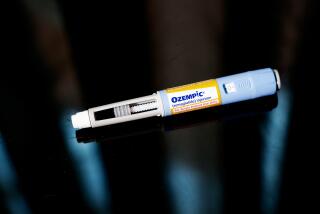Competition Cuts Into Generic Drug Firms’ Bottom Line
- Share via
NEW YORK — Generic drugs, those low-priced copies of brand-name medicines, are so popular that they now make up nearly half the 2.4 billion prescriptions written in this country every year.
That popularity hasn’t filtered down to the bottom lines of the generic drug makers, however, and the industry’s troubles mean consumers could soon see prices rising and their selection limited.
Last year, heavy competition slashed the industry’s profits and stock prices. Four of the top nine companies lost money and the industry’s share prices fell more than 20%.
In addition, the Food and Drug Administration is having trouble keeping up with a growing number of generic drug applications. The backlog is so bad it now takes more than two years to get a new generic drug approved.
The growth of generics has also awakened the brand-name companies, who see them as a rising threat to their businesses. These companies now frequently challenge generic applications before the FDA, stalling them further.
“We’re struggling. It’s been a tough year,” said Buddy Menn, a lobbyist with the Generic Pharmaceutical Industry Assn.
While Wall Street analysts say 1997 could be better, improvement may come at the expense of patients.
Several weaker companies have already been bought out and more takeovers are expected.
“Consolidation will reduce the number of players in the market” resulting in higher prices in the long run, predicts Oppenheimer & Co. analyst Mike Krensavage.
Generics owe much of their popularity to health maintenance organizations, which insist members take these cheaper medicines.
Generics are usually introduced shortly after the 20-year patent on their brand-name counterparts expire, ending the original maker’s legal monopoly on the drug.
Initially, generic versions usually sell at a discount of about 30%.
But as more companies introduce the same drug, higher competition forces deep price cuts.
A case in point is Capoten, a high blood pressure drug originally made by Bristol-Myers Squibb Co. that used to wholesale for about $73 for 100 tablets.
Within a few weeks of the first generic’s entry into the market, a dozen companies were selling it.
“The price collapsed within days to about $5 per hundred,” said Bob Milanese of the National Assn. of Pharmaceutical Manufacturers.
This hasn’t necessarily helped consumers. While the average wholesale price of generic drugs fell last year by 14%, markups by sellers boosted the retail price to consumers by nearly 6%, according to industry researcher IMS America. Analysts don’t expect the situation to get better as consolidation of generic manufacturers will ease the competitive pressure to discount.
Generic drug makers were also hampered last year by a shortage of brand name drugs losing patent protection. This year looks busier. Among the top candidates: the ulcer drug Zantac; Zovirax, a treatment for genital herpes, shingles and chicken pox; and Hytrin, for enlarged prostates.
However, proposed FDA budget cuts could worsen the agency’s generic backlog. It now takes 28 months to get a generic drug approved, up from 15 to 18 months in the late 1980s, said David Weeda, a generic industry lobbyist.
A similar backlog involving brand-name drugs was cured in the early 1990s when Congress passed a law allowing the FDA to charge companies user fees to pay for processing applications.
This year, the administration has proposed a user fee for generic drugs, but not to speed up applications. To help balance the federal budget, the administration plans to cut the appropriation to the FDA’s generic drug office by 38% and replace the money with user fees.
Doug Sporn, director of FDA’s Office of Generic Drugs, said the agency still hopes to make its handling of generic drug applications more efficient.
“We’re trying to work toward having automated rather than paper submissions,” he said.
Even if that happens, the generics face powerful foes among their brand-name competitors.
Brand-name drug makers frequently file petitions with the FDA contending that proposed generics fail to duplicate the brand-name drug--raising questions about their effectiveness and safety.
The most famous case involves Premarin, a mix of estrogen hormones used by women after menopause to ward off osteoporosis, the crippling bone disease.
Premarin is the most frequently prescribed drug in the U.S.--about 44 million prescriptions last year brought in $860 million to its maker, American Home Products Corp.
Premarin’s patent expired years ago, and two companies, Duramed Pharmaceuticals of Cincinnati and Barr Laboratories of Pomona, N.Y., want to introduce generics.
American Home contends that because the generics lack one ingredient, they won’t work as well as Premarin and shouldn’t be approved. The FDA has yet to rule.
More to Read
Inside the business of entertainment
The Wide Shot brings you news, analysis and insights on everything from streaming wars to production — and what it all means for the future.
You may occasionally receive promotional content from the Los Angeles Times.










